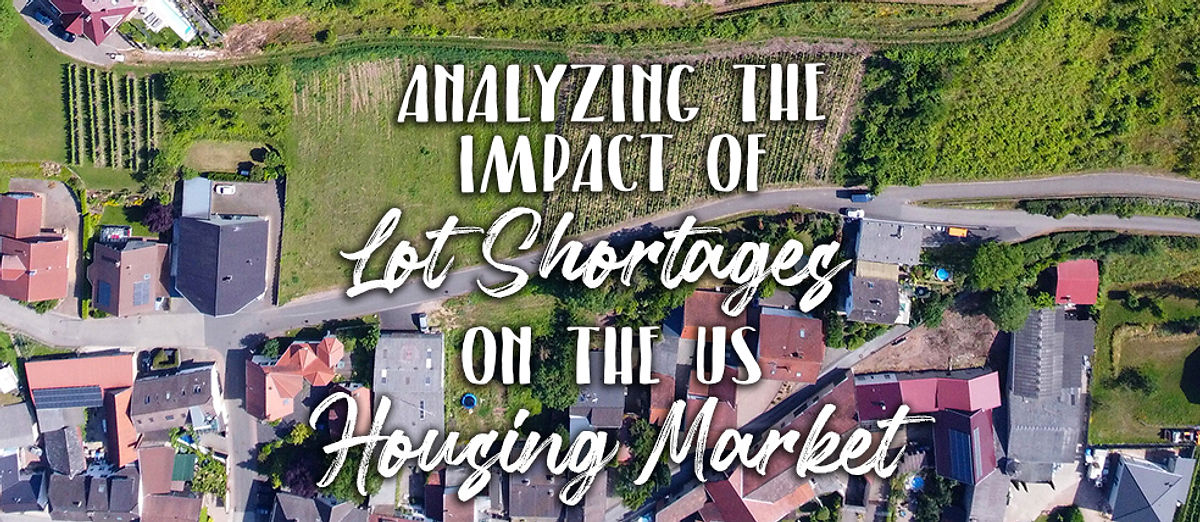
Lot shortages have emerged as a significant challenge in the US housing market. It effects construction activity, affordability, and market dynamics. Seventy-five percent of builders plan to start more homes in 2024 than in 2023, so the demand for lots is only going to get stronger.
Severity of Lot Shortages
Data released by the National Association of Home Builders (NAHB) indicates that lot availability hit a near record low in 2023. Sixty-seven percent of single-family builders report some form of shortage. Although this number indicates a marginal improvement from the record-low lot supply observed during the COVID years of 2020-2022, it remains the second-largest lot shortage since record-keeping started in 1997.
Factors Contributing to Shortages
Several factors contribute to the persistent shortage of lots in the US. The availability of credit is a major hurdle for developers as loans becoming harder to obtain and more expensive due to higher interest rates. The expenses associated with purchasing land and procuring entitlements, including permit, tap, and impact fees, along with the effort to comply with regulations, zoning, and building codes, significantly influence the cost of development. These costs pose major obstacles to the creation of affordable lots and represent significant expenses that occur before home construction begins. Indeed, a recent NAHB study revealed that government regulation accounts for approximately 42% of the cost of a lot for an average new single-family home.
Implications for Builders and Homebuyers
The impact of lot shortages extends beyond builders to affect homebuyers and housing affordability. Limited lot supply leads to increased competition among builders, driving up land prices and construction costs. This, in turn, translates into higher home prices for buyers leadingto a perpetual cycle of affordability challenges.
Addressing Lot Shortages
Efforts to mitigate lot shortages include simplifying regulatory processes, enhancing developers’ access to financing, and overhauling zoning and subdivision codes to be more inventive and adaptable with the goal to meet the challenges of today’s housing market. In response to housing shortages, some cities have adopted zoning rules to permit a higher number of units per acre or to allow for smaller lot sizes. This seeks to improve land use efficiency and enhance housing density, with the trade-off of dedicating more open spaces for community benefits like parks and greenways.
Conclusion
As America grapples with a critical shortage of approximately 3.2 million homes, the scarcity of lots remains a major hurdle for the housing market, widening the gap between supply and demand. Addressing the crisis requires that developers supply enough lots that meet the demands of new home construction and affordability. This calls for the industry to adapt to challenges and innovative approaches to land use in cities and counties across the U.S.

